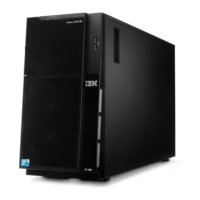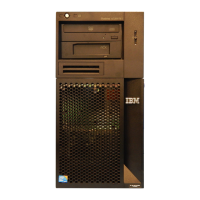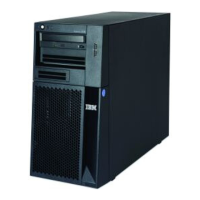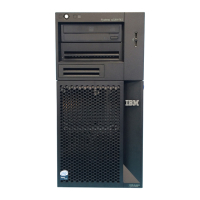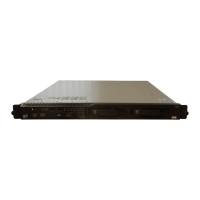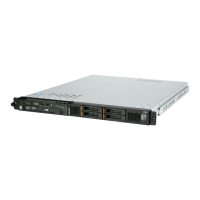Attention: If the fan power cable is not connected correctly, the server will not
start up when you turn on power.
v To connect the fan power cable on the fan board, orient the fan power
connector so that the release tab faces the rear of the server; then, connect
the cable to the connector on the system board.
v To connect the other end of the fan power cable on the power-supply paddle
card, orient the fan power cable so that the release tab faces the front of the
server; then, connect the cable to the connector on the power-supply paddle
card.
The following illustration shows the correct fan power cable connections.
4. Reconnect the signal cable.
5. Install the cover (see “Installing the cover” on page 146).
6. Reconnect the external cables; then, reconnect the power cords and turn on the
peripheral devices and the server.
Removing the fan board
To remove the fan board, complete the following steps:
1. Read the safety information that begins on page vii and “Installation guidelines”
on page 133.
2. Turn off the server and peripheral devices and disconnect all power cords and
external cables.
3. Remove the cover (see “Removing the cover” on page 145).
4. Remove the system fan cage (see “Removing the system fan cage” on page
190).
Chapter 5. Removing and replacing server components 193

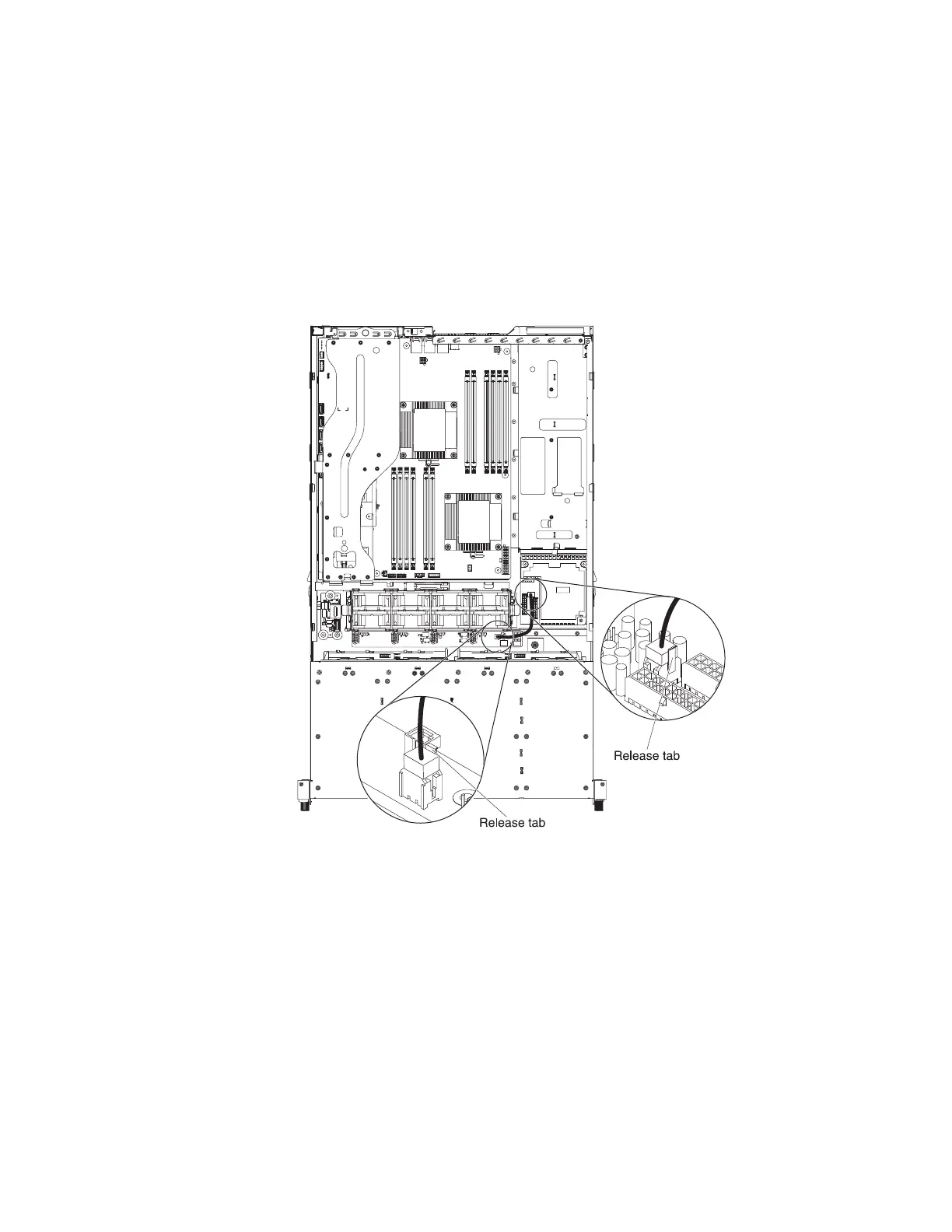